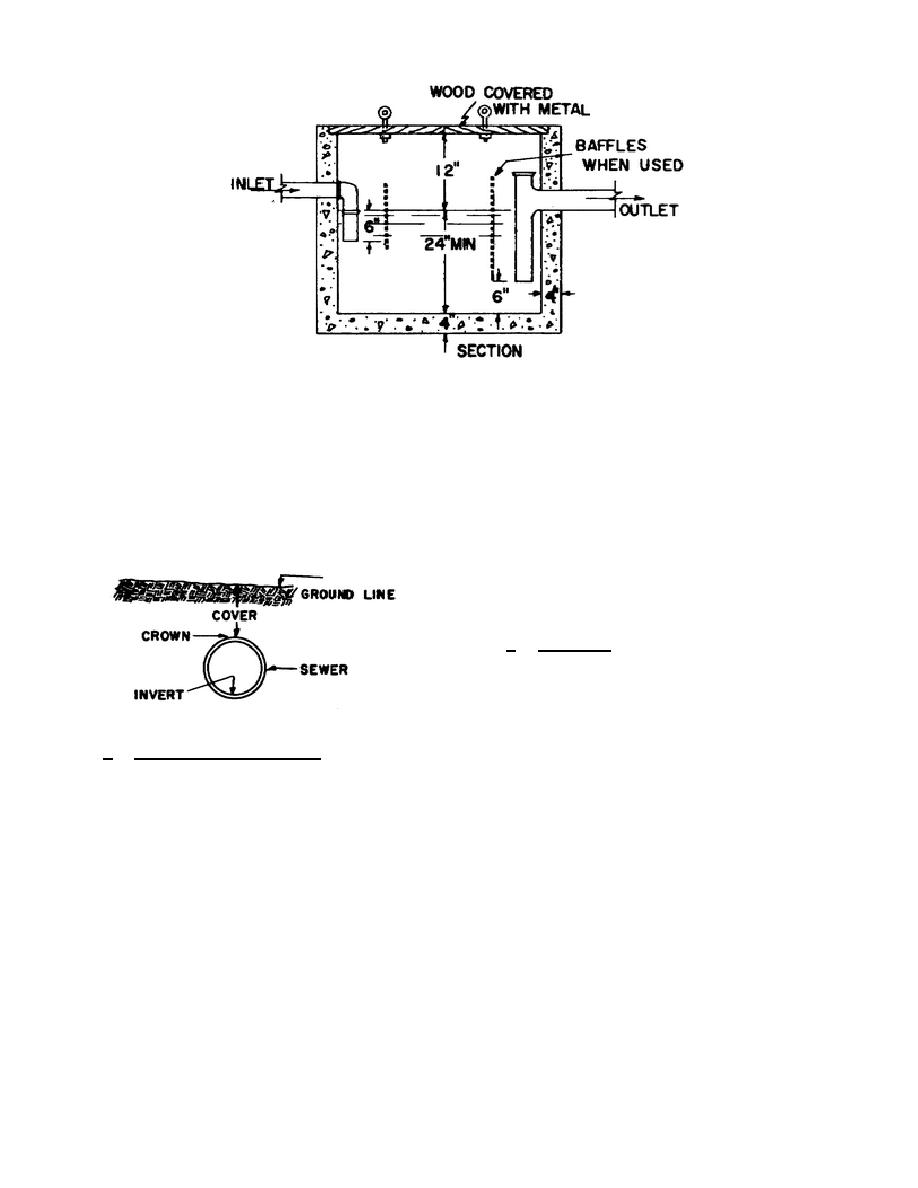
Figure 10.
Grease trap.
the pipe from the superimposed live
the building would not be adequate for
loads of ordinary traffic, and 4 feet
complete rodding, outside cleanouts,
for heavy trucks (fig 11).
Where
or manholes if cleanouts are not
frost
penetrates
to
considerably
feasible, should be provided.
For
greater depths than this and lasts for
most TO installations 4-inch diameter
an appreciable time, greater depths
sewers on a 1-percent slope will
below
the
frost
line
should
be
provide
adequate
capacity.
The
provided.
Depths of excavation will
minimum slope required can be found by
be
determined
by
equipment
using
the
design
procedure
given
capabilities.
below.
Except where frost or load
conditions prevail, 1 foot of cover
will
be
sufficient
for
building
connections.
d. Manholes. Manholes are required
at the end of laterals and at each
change of direction, slope, or pipe
size except for building connections.
The distance between manholes should
Figure 11.
Pipe cover.
not exceed 400 feet in sewers of less
than 18 inches in diameter.
For
c. Building connections.
Building
sewers of 18-inch pipe or larger and
connections
should
be
planned
to
for outlets from sewage treatment
eliminate as many bends as practical
plants, a spacing of 600 feet may be
to provide convenience in rodding when
used provided that the velocity is
required.
Generally, connections of
sufficient to prevent sedimentation.
building sewers to other sewers should
The crown of the outlet pipe from a
be made directly to the pipe with
manhole should be on line with or
commercially
manufactured
fittings
below
the
crown
of
the
inlet
rather
than
through
manholes.
pipe. Where conditions are such as to
Manholes may be used, however, if no
produce
unusual
turbulence
in
extra expense would be incurred, and
the
manhole
and
especially
where
they should be used if the connection
the
outlet
pipe
is
to
be
is more than 150 feet from the nearest
cleanout.
Where the cleanout inside
4-15



 Previous Page
Previous Page
